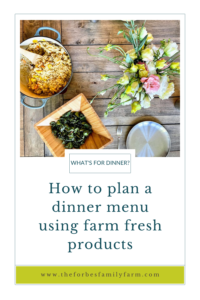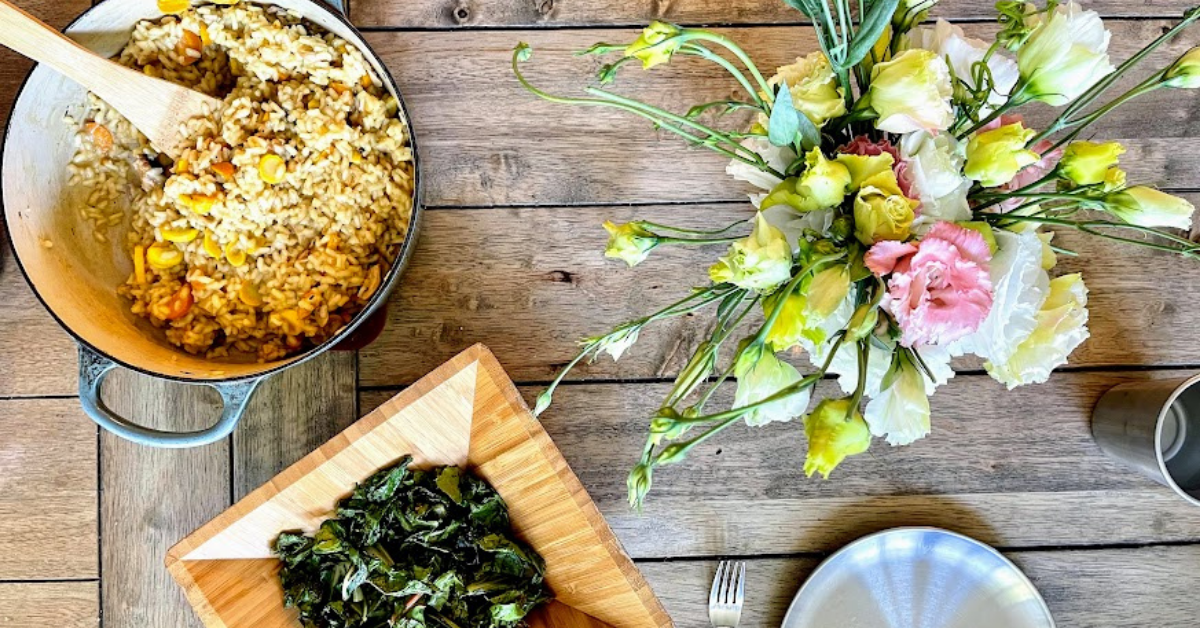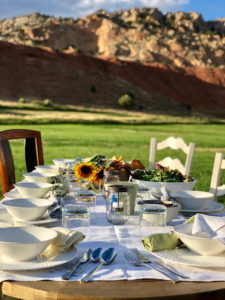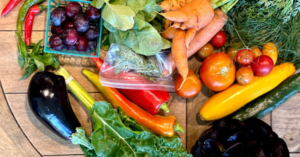All those veggies just staring at me
When you come home from the farmer’s market or open your Community Supported Agriculture (CSA) box, how do you begin to pull all the various elements into a delicious meal? This was a question that stumped me for a number of years when we were first married. Sure, I could cut up some of the veggies for a salad every night, but that still left a lot of veggies in my box and I didn’t want all that good produce going to waste…after all, more was coming the next week! So how could I start planning a dinner menu (or several!) to take advantage of all this fresh, local food?
Building a comprehensive dinner menu
Sure, I googled recipes, flipped through cookbooks and talked with friends at work, but what ultimately helped me hone this skill was when I began working part time at a local cooking school. It wasn’t a culinary school focused on pumping out the next great restaurant chefs; instead, the school focused on teaching everyday people (often couples out on a date night!) to cook one comprehensive meal.
I watched as the head chef would go to the market to get the freshest ingredients available. Then she’d come back to the shop and plan a meal that brought all the ingredients together in a cohesive way. It was like magic.
Typically she would create a menu based around a particular theme – Spanish tapas, Italian date night, fancy picnic food, etc. She would then use that theme as her anchor and build the menu off that concept. Many years later I heard Samin Nosrat of Salt, Fat, Acid, Heat fame use the term “anchoring” to describe how she builds a menu in a similar manner.
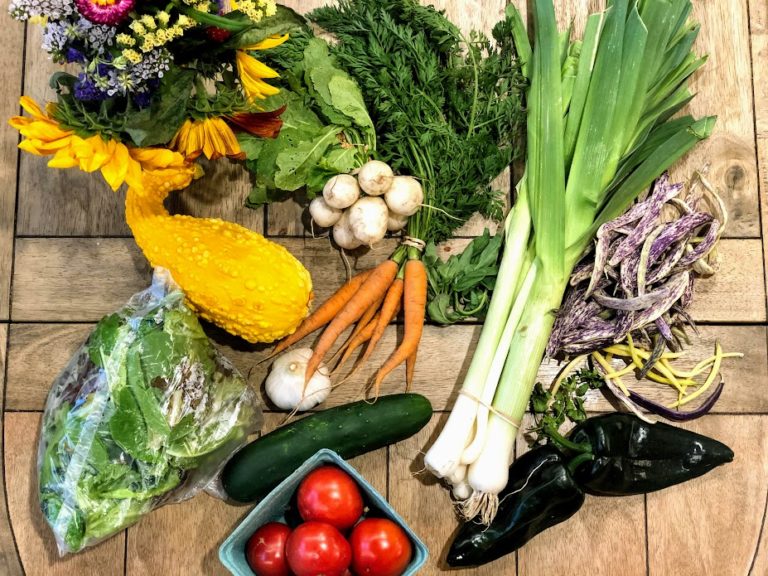
Determine your anchoring concept
Your anchor can be almost anything – the cut of meat you have thawing in the refrigerator, a flavor profile from a cuisine you love, or a cooking method – like choosing to use your grill. Once you’ve established an anchor you build everything else around this idea. You may still need to do some searching for more specific recipe inspiration, but at least you have narrowed down your search term from “vegetable inspired dish” to something a little more concrete like “grilled root vegetables recipe”!
Often people use this concept of anchoring for big holiday meals like Thanksgiving without even realizing it. You know the turkey will be in the oven for several hours, so you plan your other dishes around this constraint. Thus you plan other dishes on the stovetop or you prepare things in advance that can be simply reheated before serving. But knowing your anchor in advance helps you plan accordingly.
Menu planning for the week doesn't have to be complicated
This is a concept we use every week in our own household as we sit down to brainstorm our meals for the week. While we don’t always go into specific detail at the beginning of the week, we at least determine our anchor for each meal and start building the menu from there.
As the week goes on, we draw inspiration from Instagram, favorite cookbooks or even just walking through the gardens and realizing we have even more chard ready to harvest than we realized! Because we know our anchor we have a starting place from which to build and add these other ideas to create a delicious, comprehensive menu.
We try to create balance and complementary flavors in each meal. For instance, if we want to make a rich, creamy macaroni and cheese (a highly requested dish in our house!), we’ll want the rest of the meal to be light. Perhaps we’ll try to find ways to bring more acid into the other dishes to cut through the richness of the pasta.
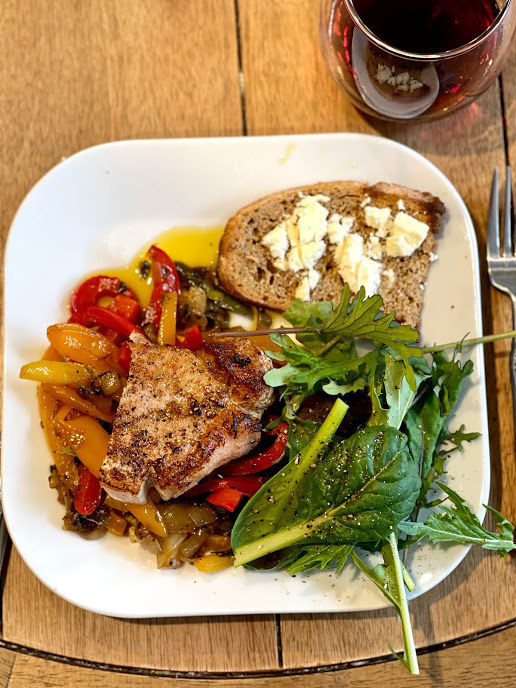
Bringing it all together
Once you’ve gathered your inspiration and narrowed down your recipes or desired ingredients, it’s time to put together at least a rough timeline for your meal. This helps ensure everything finishes together. There’s nothing more annoying than finishing up 90% of the meal and then realizing you still need to start making a sauce that will take another 30 minutes!
Everyone has different styles and methods, so it will probably be a little trial and error until you determine what works best for you. Steve and I have very different styles in the kitchen – I’m the planner and he’s the spontaneous one, but by using this concept of identifying our anchor, we can both work together harmoniously and develop some pretty amazing food for our family and friends!
How do you plan your meals? Have you found a system that works for you? Comment below and let us know how you plan a dinner menu for your family.
